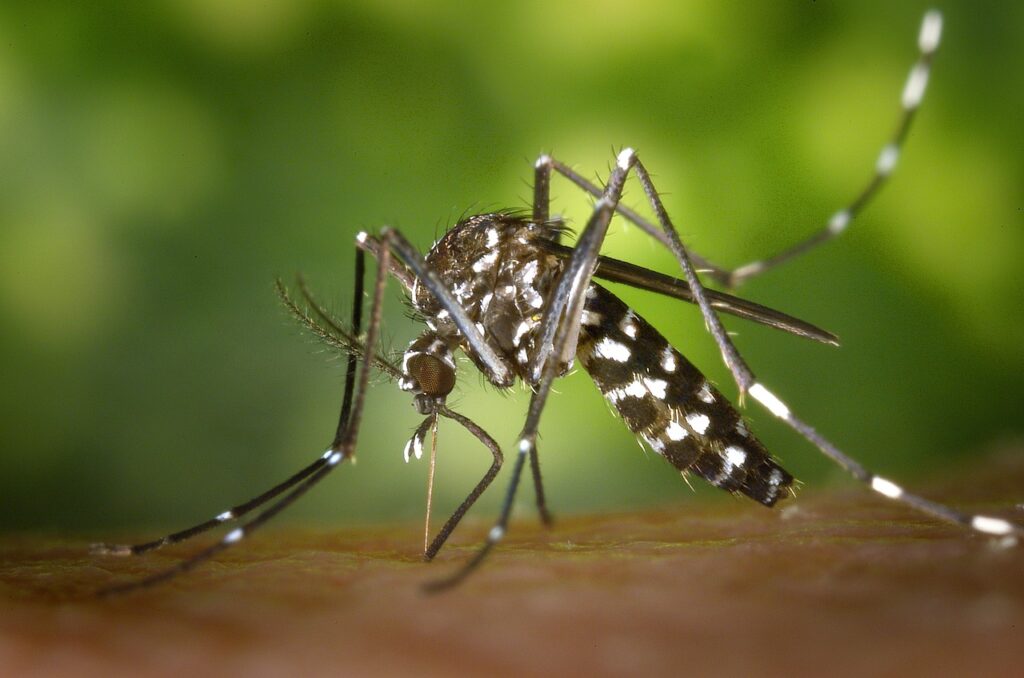
Malaria is transmitted by the Anopheles Mosquito, the number and type of which determine the extent of transmission of infection in a given area. It is transmitted to humans by the bite of female anopheles mosquitoes that are infected with the protozoan parasite of the genus Plasmodium.
The Three most efficient species of mosquitoes are
- Anopheles Gambiae,
- Anopheles Arabienses
- Anopehles Funestus
Mode of transmission of Malaria
The transmission of malaria involves the transfer of the parasite from mosquito to man as much as from man to mosquito. the bite of an Anopheles mosquito carrying sporozoites within its salivary gland involves three distinct but linked processes. These are the penetration and probing by the mouth parts into the skin, the injection of saliva containing sporozoites, and blood feeding.
Sporozoites injected into the skin during probing seem to be the only ones capable of reaching the liver of the host. Sporozoites Injected into venous blood during feeding have no effect on the parasitic cycle as they are immediately re-ingested by the mosquito in its blood feed. Transmission is affected by climate and geography and often coincides with the rainy season. it can be transmitted to man through three known ways
- Vector Transmission
- Blood Transmission
- congenital transmission.
Vector transmission:
Whereas many of the other human parasites seem happy to live in relative harmony with their hosts, those of plasmodia have tendency to multiply rapidly and in an uncontrolled way in human hosts which may prove fatal. Anopheles gambiae, Anopheles arabienses, and Anopheles Funestus are the three most important species of anopheles mosquitoes that are involved in transmission.
The Disease is acquired when a biting and infected female anopheles mosquito takes a blood meal with its proboscis in order to stimulate its reproduction. while probing for blood, she injects the microscopic parasite which then finds its way to the victim’s liver.
There it invades a few liver cells and develops over a period of one or two weeks during which the human host is blissfully unaware of the infection. At the end of this incubation period, the infected liver cells rupture and release a much increased number of parasites into the bloodstream where they rapidly invade the circulating red blood cells. once inside the red blood cell, the parasites proceed to consume the contents of its new home and to grow.
At the end of two to three days, the destroyed cells burst releasing more parasites which immediately invade more red blood cells. thus the infection expands and within a week the victim begins to feel ill.
Blood transfusion
Malaria can be transmitted by transfusion of blood from an infected person to a healthy person. Induced malaria by blood transfusion was first reported in 1911 and it is well established that all four human parasite type (P. falciparum, P. Vivax, P. Ovale, and P. malariae) may be transfusion-transmitted.
Although blood is used in the management of emergencies involving patients with life-threatening illnesses as a life-saving venture, it also poses a problem if not well managed. There is always a risk of immunological adverse reactions and transmission of malaria by blood transfusion is a serious risk as diagnosis of malaria in the recipient is unexpected and often missed.
Hence, Infected blood donors are considered a potential hazard for blood recipients. the fact that malaria parasites can survive in red blood cells at refrigerator temperatures (2-60 C ) for days or weeks led to the original exclusion of all blood donors who could represent a potential risk.
When such transmission takes place, a sexual blood form of the parasite continues to develop in the peripheral blood of the recipient but exo erythryocytic stages are not formed in the liver. this is because these forms originate from sporozoites inoculated by mosquitoes themselves. relapses do not occur and therefore malaria transmitted in this way is easily cured.
The possibility of acquiring malaria by heroin intravenous injection has also been established. cases of Induced malaria in Narcotic abuses due to falciparum infection were reported in Europe by the World Health Organization.
Congenital Transmission
Congenital Malaria is the Uterine Transfer of malaria from mother to child in the womb. it is now recognized that malaria Parasites can cross the placental barriers enter fetal circulation and give rise to congenital malaria. Vertical transmission of malaria across the placenta from mother to fetus is diagnosed when parasitemia is found in the neonate within 7 days of birth, or later.
If there is no possibility of postpartum infection by mosquito bite or blood transfusion. All four species of plasmodium can produce congenital infection but plasmodium falciparum and plasmodium vivax are most common.
Such infection results in low birth weight, abortion, stillbirth, or death in newborn babies. in endemic regions, the incidence of congenital malaria is usually extremely low or it may not result in any significant problem despite the high prevalence of placental infection. this is because sufficient antibodies would have also crossed from the maternal compartment to the fetal compartment to protect the newborn babies in the early phase of life.
The incidence is much higher in infants born to non-immune mothers and increases during malaria epidemics. outside the endemic areas, plasmodium malaria causes a disproportionate number of cases because of its very long persistence..
